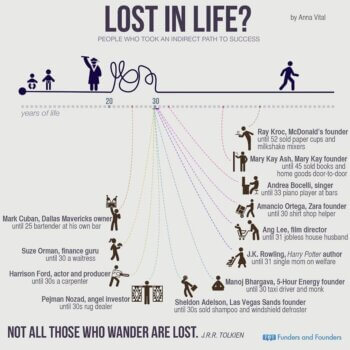I started including digital transformation on my teaching courses just over four years ago, a year later creating a standalone program; although many of the ideas had been there for a long time. Companies were becoming increasingly aware that digitalization and technology were already part of their customers’ lives, and understood that they would have to adapt their business models in response to these changes.
What does such a business school course look like? Logically, I started at the beginning, trying to get my students to understand why digital transformation was taking place and why companies needed to adapt to it if they didn’t want to be left behind. As a result, my courses usually kicked off by trying to show students that the change I was talking about was already taking place out there in the big bad world, already evident in many aspects of our behavior, and that therefore we could no longer avoid it.
This year, I have begun to see that there is no need for this kind of introduction: my students, and their expectations, are evolving. The average student is already fully convinced of the need for change and is looking for the tools to carry out digital transformation. From an initial premise along the lines of “tell me what’s going on, how it affects me and help me to understand how important it is for my business and how to respond to it”, we have moved on to “I understand that the world has changed, I am fully convinced of the need to transform, so give me tools so I can lead that transformation.”
Thus, most of my earlier introductory material is no longer necessary and the focus is instead on the main idea that emerged later in the development of the course: that digital transformation in companies begins with the digital transformation of the people who work there and therefore, I focus on issues such as leadership and change management. No company is capable of transformation if its leaders have not understood the importance of that transformation and have transformed their personal relationship with technology.
Four years on, what are people attending a course on digital transformation looking for? Increasingly, they want diagnostic tools to evaluate the situation in their companies, to understand what and who they can count on, what they will have to do, what the competition is up to, what they can aspire to and how much it will cost them. In other words, what is this moving goal called being digital, and what do they need to do to achieve it? Is there some kind of digital nirvana they should aspire to? What is their goal as a company? The idea is not just to take the temperature of their company, but that of their board of directors, their top management, of the people who will approve the budgets needed to carry out the digital transformation they already know is essential. Nowadays, few people on my courses are there to be told what digital transformation is: instead they want to learn how to lead it. In addition to diagnostic tools, therefore, they want to understand the variables and the mainstays of digital transformation in their company.
As a result, I find that the best cases studies are not those involving companies born in the digital age, but instead those trying to implement it, companies like those my participants work for or run. They want to learn from the experience of companies like theirs rather than copying models that out of reach. Sure, we all want to be like Amazon or Google, but very few of us are in a position to do so.
Therefore, it makes more sense to discuss the issues already on managers’ minds as part of the learning process, such as machine learning. Implementing digital transformation requires mature processes, an orientation toward data. In the case of most companies this is going to be a long journey involving the definition of objectives, obtaining and transforming data and process engineering before getting those models, as well as evaluating and measuring results and verifying their predictive value. Thus, the level of machine learning preparedness, increasingly seen as an objective for all companies, can be used to gauge the level and objectives of digital transformation in companies.
But diagnostic models also have a problem: they are usually created by consultants who, after several attempts at explaining or putting digital transformation into practice in companies, try to crystallize them as simple matrices or tools. I prefer to help managers understand that they must create their own diagnostic models, because consultants’ models tend to see all problems as identical, with the same variables having the same weight, and based on the belief that there is a single recipe to fix all the problems. Should these kinds of models be used on a digital transformation course? Increasingly, but with a critical component, as a way of seeing how others understand the process and what are the significant elements in the case of my students’ companies.
In the final analysis, models are needed to sell that process within companies: what specific tools can I use to bring about change? What resistance will I meet? What do I need to tell my board so it understands the issues and gives me its much-needed support? Which board members are most likely to support these kinds of ideas and understand their need? What transition models should I use? Where do I begin? These are questions best answered not so much by reading or studying, but by working with companies that are already carrying out digital transformation, with real managers dealing with real problems. The contents of business school courses should not reflect some abstract academic ideal or the contents of a textbook, but instead what companies need. My observation that the content demanded by my students is evolving may be no more than that: an observation; but it might be one worth taking note of.
With each day that passes, digital transformation shifts from being a “what” to a “how” question. Obviously, it’s not taking place in every company or in every industry, or at the same pace in those companies and sectors where it is going on. Nevertheless, there is a process of change underway out there in the world, and if your company hasn’t yet begun the process, if you are still deciding whether to begin digital transformation rather thinking about how to carry it out in the most efficient and unwavering way possible, then you may soon discover that the competition is pulling ahead and that adapting is going to take longer and be much more complex than you might have thought.
By spending too much time thinking rather than doing, your company could soon find itself left behind. Look around: look at yourself in the mirror, look at those who work with you, look at your managers. Do they understand the importance of digital transformation and see it as a strategic objective? Is your company able to attract and retain talent that does understand these issues, or has it become a refuge for those not wanted by companies who have already evolved digitally? It’s time to check that thermometer again and take the necessary steps.
About the Author
This article was written by Enrique Dans, professor of Innovation at IE Business School and blogger at enriquedans.com.





























